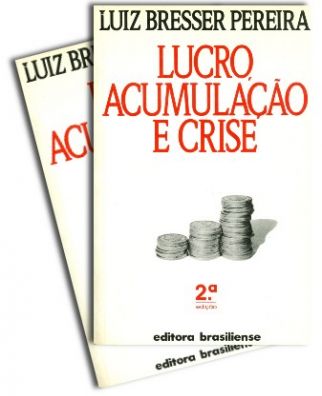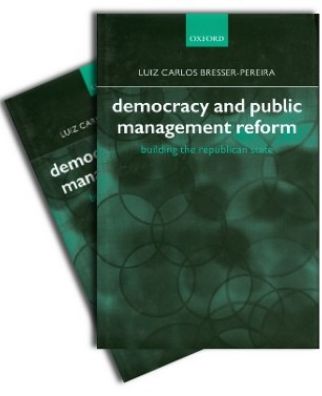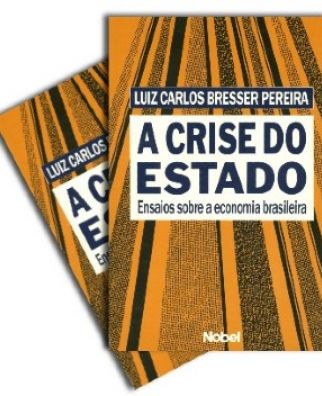2005. The perverse macroeconomic model of the Brazilian economy combining high interest rate and low exchange rate with growth with foreign savings and quasi-stagnation. (In edited book, Novo Desenvolvimentismo)*
BRAZILIAN ECONOMY
ALL TEXTS ON BRAZILIAN ECONOMY
2004. What should be the national agenda, as it was discussed in the 1o. Fórum de Economia da Fundação Getúlio Vargas". (Note: Conjuntura Econômica)
2004. The high basic interest rate (Selic) is today the basic obstacle to a true macroeconomic stabilization. (Article: Folha de S.Paulo).
2004. The critique of the growth cum foreign savings strategy adopted in the Cardoso administration. Foreign finance does not cause growth. Spanish version available. (Paper: International Journal of Political Economy)*
2004. The growth cum foreign savings strategy and the consequent exchange rate evaluation is the basic cause behind Cardoso administration's poor economic performance. Translation of "O Segundo Consenso de Washington e a Quase-estagnação do Brasil". (Paper: Problèmes d'Amérique Latine)*
2004. Between 1998 and 2003 foreign savings fell 5% and domestic savings increased correspondingly, financed by a reduction in real wages (brought by exchange rate depreciation) and a diminution of the budget deficit. (Article: Folha de S.Paulo)
2004. Institutional reforms are required but are not the central priority in Brazil. (Article: Folha de S.Paulo)
2004. The method that Celso Furtado utilizes is essentially historical his passion - a measured passion - is Brazil. A survey of Furtado's work. Portuguese and English versions available. (Paper: Revista de La CEPAL)*
2004. Main economic objectives for Brazil and their viability. First regular column (every 14 days) in FSP-Dinheiro. (Article: Folha de S.Paulo).
2004. The risk involved in exporting commodites is to have the exchange rate basically determined by their costs - what may turn inviable to export manufactured goods with high added value. (Interview to Gazeta Mercantil)
2004. Policies recommended by Washington are rather a reaction to the threat represented by the new industrial countries than a genuine contribution to their economic growth. Survey of the book of Ha-Joon Chang. (Article: Folha de S.Paulo)
2004. Since 1980 Brazil's economic growth has been frustrating, bust social and political development was real, as the 1995 Public Management Reform demonstrates. (Paper: Revista de Administração Pública)*
2004. With Carmen Varela. Latin Americas quasi-stagnation in the 1990s can be explained principally by the growth cum foreign savings strategy. (Paper: Journal of Post Keynesian Economics)
2004. Summarized view of what is needed for Brazil achieve macroeconomic stability and resume growth. (Testimony to the Brazilian Câmara dos Deputados, published in Revista de Economia Política, October 2004)
2004. Between 1980 and 1994 Brazil adjusted and reformed its economy. Since then a perverse macroeconomic policy kept the economy semi-stagnant. (Article: Folha de S.Paulo, Mais!)
2004. While income per capita increased 8.5% in 20 years, social expenditures, 43.4%. Given the improvement in social standards this demonstrates that social expenditures are effective. (Note: Revista Econômica)*
2004. The East and South East countries show that there is an alternative to the conventional orthodoxy which perpetuates macroeconomic instability in Brazil. (Article: Folha de S.Paulo)
2003. Conventional orthodoxy allways finds a new argument to keep the basic interest rate high. (Article: Valor Econômico,)
2003. Country risk: the ideological and the relevant rates. A comparison with Russia.(Article in Valor Econômico, 26.11.2003).
2003 Fear is again defeating hope: Brazilians' diminished aspirations. (Article in Folha de S.Paulo, 9.11.2003)

























